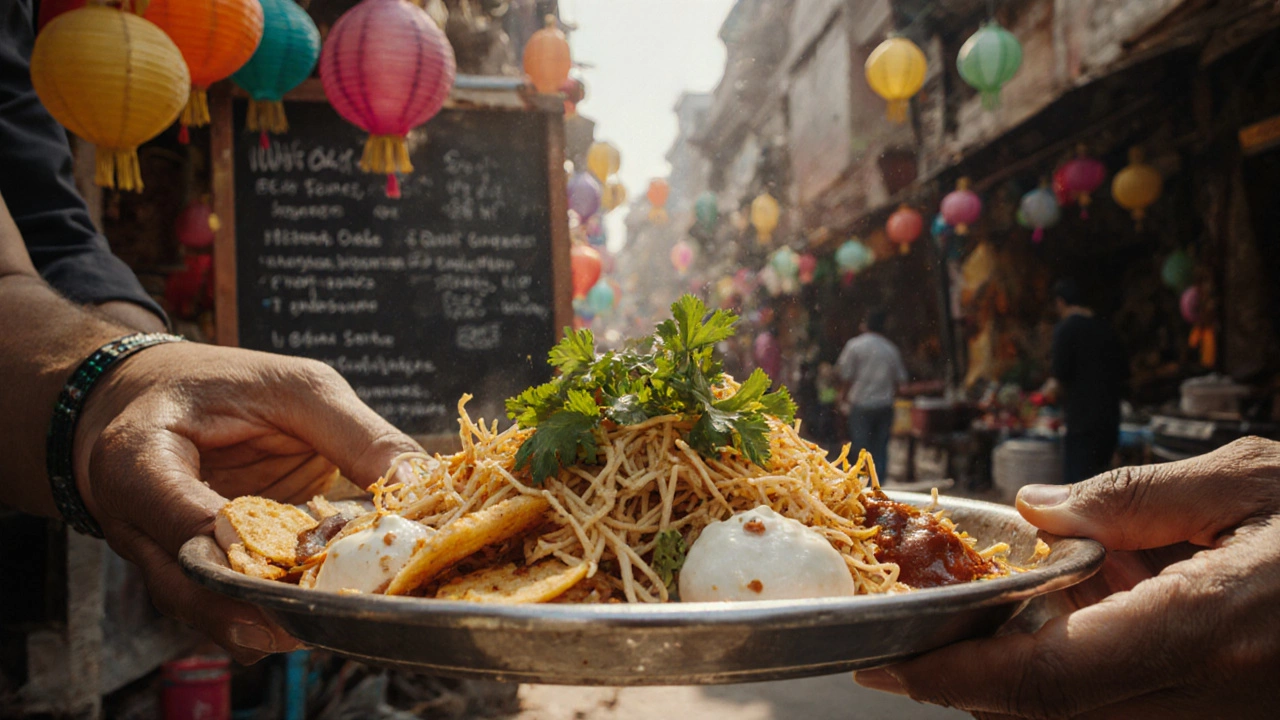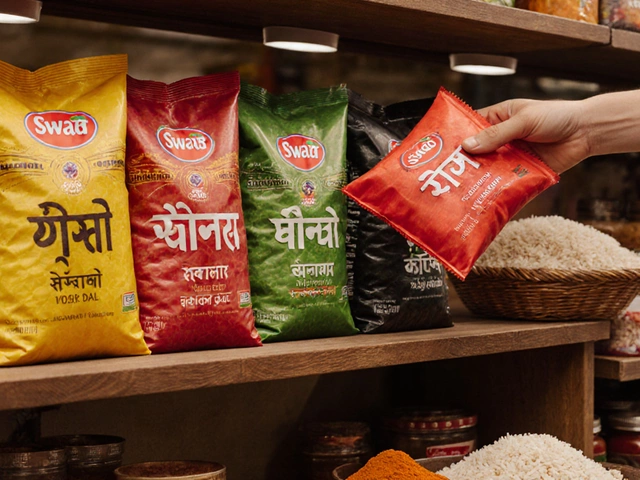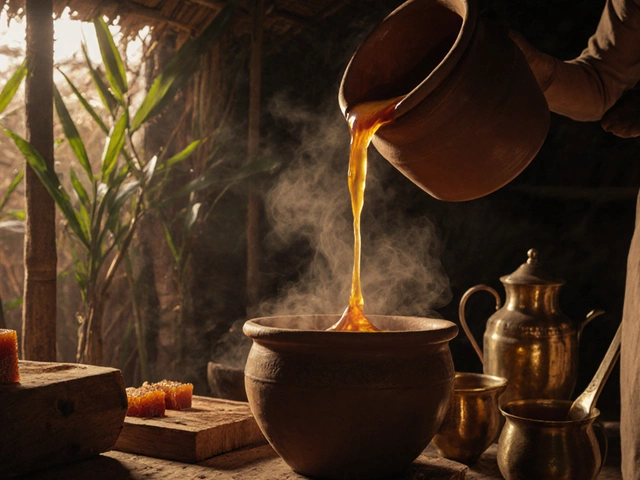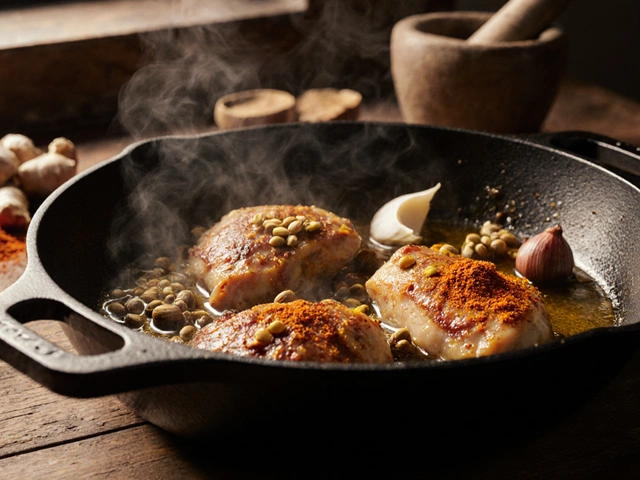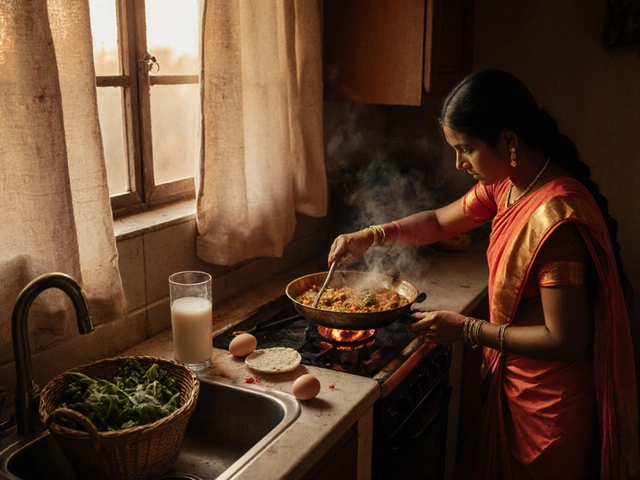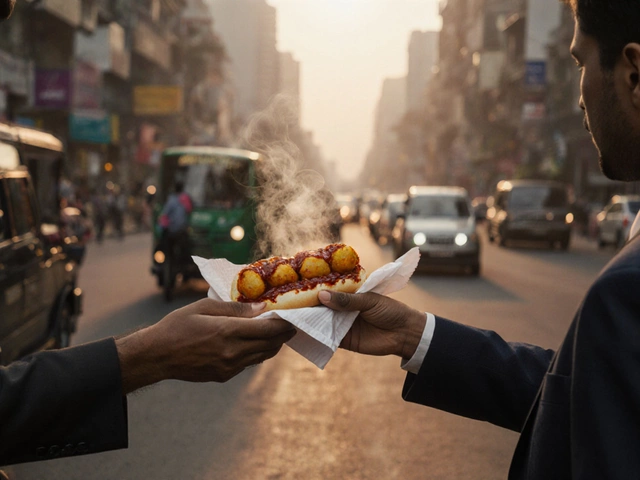Indian Street Food Terminology Quiz
Quiz: Identify the Indian Street Food Term
Match each description with the correct Indian street food term:
A crispy, hollow shell filled with spiced potatoes, chickpeas, and a burst of mint-coriander water.
A light, packed meal or snack often found in South India, typically containing idli, vada, or dosa bites.
Fried savory snacks such as sev, bhujia, and mixture, commonly sold in small packets.
Learn More About Indian Street Food Terms
Explore the meanings and regional usage of common Indian street food terms:
Pro Tip: Understanding these terms helps you navigate Indian street food menus and appreciate the regional diversity of Indian cuisine.
When someone asks, “What’s the word for Indian street food?” the short answer is chaat. But the story behind that word, the regional twists, and the flood of tasty items it covers can feel like a whole culinary adventure. This guide breaks down the term, shows you the most common chaat dishes, points out other names you might hear, and gives you a quick cheat‑sheet for naming Indian street eats.
What Chaat means in Indian cuisine
Chaat is a Hindi word that loosely translates to “tangy” or “savory snack.” Historically it described the mix of sweet, sour, salty, and spicy flavors that vendors piled onto a single plate. Today, chaat is the umbrella term for a whole family of street‑side snacks served across the subcontinent, from bustling Delhi lanes to coastal Karnataka stalls.
Core ingredients that make a dish a true chaat
- Flat or puffed base (roasted papdi, poori, or puffed rice)
- Fresh veggies - often diced potatoes, onions, or tomatoes
- Protein boost - boiled chickpeas or black‑eyed peas
- Seasoning blend - chaat masala, a mix of cumin, coriander, dried mango powder, and black salt
- Tangy sauces - tamarind chutney, mint‑coriander chutney, and sometimes a drizzle of yogurt
- Finishing touches - fresh cilantro, sev (crispy noodle‑like snack), and a squeeze of lime
The magic is in the balance. A perfect bite hits all five taste receptors at once - a reason why chaat feels so addictive.
Top‑most chaat varieties you’ll see on any Indian street
-
Bhel Puri - puffed rice mixed with sev, peanuts, chopped veggies, and a sweet‑sour tamarind glaze. It’s the go‑to snack in Mumbai’s beaches.
-
Pani Puri - hollow crisp shells (puri) filled with spiced potatoes, chana, and a burst of mint‑coriander water (pani). Each pop is an explosion of flavor.
-
Sev Puri - flat papdi topped with mashed potatoes, chutneys, chutney‑drizzled chickpeas, and a generous mound of sev.
-
Aloo Tikki Chaat - shallow‑fried potato patties topped with yogurt, tamarind sauce, and crunchy sev.
-
Dahi Puri - the softer, yogurt‑laden cousin of pani puri. The puri is filled with boiled potatoes, chickpeas, and a generous dollop of sweet‑tangy yogurt.
Every city adds its own spin. In Kolkata you’ll find Jhalmuri, a spicy puffed‑rice mix, while in South India the term paniyaram covers a different street‑side treat entirely.
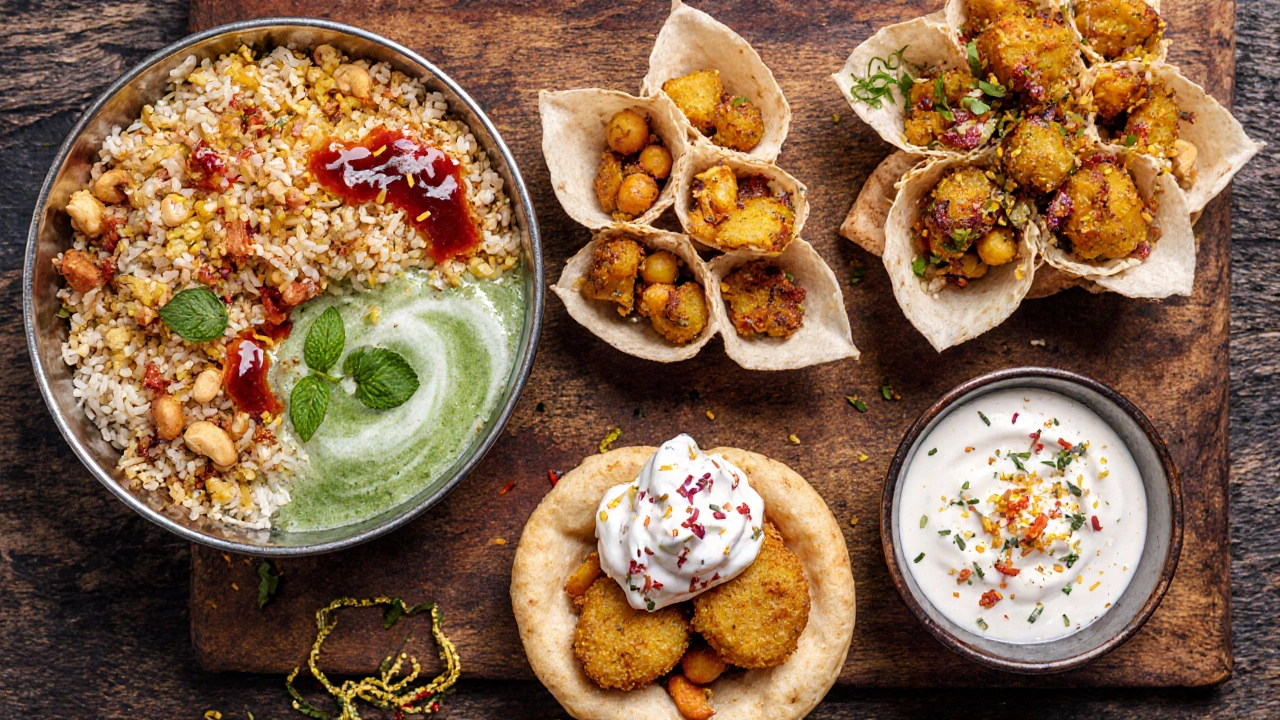
Other words you might hear for Indian street snacks
While chaat is the most common umbrella, locals sometimes use other descriptors:
- Tiffin - a generic term for a packed snack or light meal, often used in South India for quick bites like idli or vada.
- Namkeen - savory fried snacks such as sev, bhujia, and mixture, sold in small packets.
- Chatpata - an adjective meaning “tangy” or “spicy,” frequently attached to dish names (e.g., chatpata samosa).
- Street Snack - a generic English phrase used by tourists; it usually refers to any portable, fried or boiled item sold on a curb.
Understanding these nuances helps you read menus, ask vendors for recommendations, and impress friends with the right terminology.
Where to find authentic chaat in India (and abroad)
If you’re traveling, look for bustling lanes, night markets, or dedicated “chaat corners.” In Delhi, the lanes of Chandni Chowk and the streets around Connaught Place are saturated with vendors shouting, “Ek plate chaat, bhai!” In Mumbai’s Girgaum Chowpatty, the seaside stalls offer the freshest bhel. Outside India, towns with a sizable Indian diaspora-Manchester, Toronto, Sydney-often house a “chaat corner” inside Indian grocery stores or food courts.
Pro tip: watch the preparation. A good chaat stall keeps the chutneys in separate glass jars, serves the base on a clean metal plate, and lets you customize the spice level with extra chaat masala or fresh green chilies.
Quick comparison of the most common Indian street‑food terms
| Term | Typical Scope | Key Items | Region Where It Pops Up Most |
|---|---|---|---|
| Chaat | Savory‑tangy snack mix | Pani puri, bhel puri, sev puri, aloo tikki | North & West India |
| Tiffin | Light packed meal or snack | Idli, vada, upma, dosa bites | South India |
| Namkeen | Fried savory bites, often packaged | Sev, bhujia, mixture, mathri | All over India, especially Gujarat |
| Street Snack | Broad umbrella for any quick bite | Samosa, pakora, kachori, vada pav | Urban centers worldwide |
Use this table when you need to decide which word fits the dish you’re describing or searching for online.
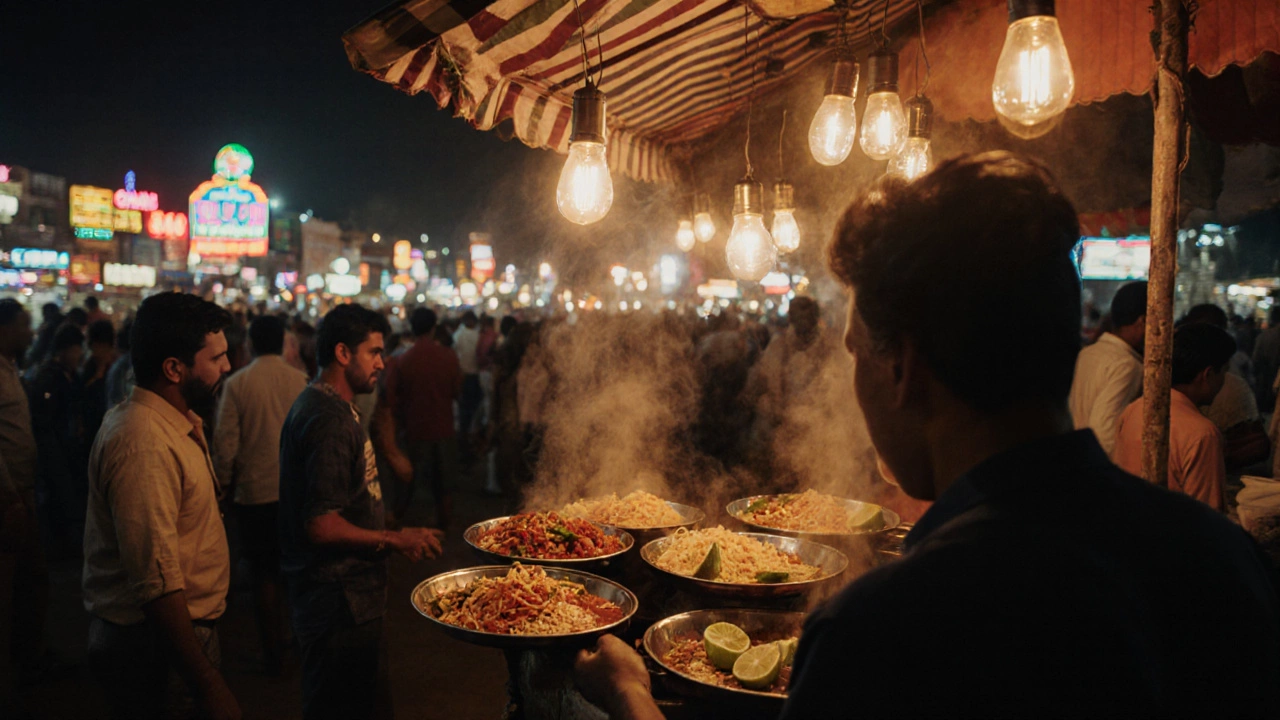
Cheat‑sheet: Naming Indian street food like a local
- Is the dish primarily tangy, sweet‑sour and garnished with sev? Call it chaat.
- Does it come in a small, sealed container meant for a quick bite? Likely a tiffin or namkeen if it’s fried.
- Is the focus on a crisp, deep‑fried shell you fill on the spot? That’s classic pani puri or its regional cousins (golgappa, phuchka).
- When the vendor offers a tray with multiple mini‑bites (samosa, pakora, kebab) arranged for sharing, the generic term street snack fits.
Cooking at home: Recreate the street‑style chaat experience
- Gather a base: use ready‑made papdi or puffed rice.
- Prep toppings: boil potatoes, chickpeas, and slice onions & tomatoes.
- Mix sauces: blend tamarind pulp with jaggery (sweet) and chili powder (spicy); blend cilantro, mint, green chilies, lemon juice for the green chutney.
- Assemble: layer the base, add toppings, drizzle both sauces, sprinkle chaat masala, sev, and fresh coriander.
- Serve immediately to keep the crispiness intact.
Even a modest home kitchen can mimic the crunchy‑soft texture contrast that makes street chaat unforgettable.
Frequently Asked Questions
Is “chaat” the only word for Indian street food?
No. While “chaat” covers the tangy‑savory snack category, other terms like “tiffin,” “namkeen,” and the generic “street snack” are also used, especially in regional contexts.
What’s the difference between pani puri and golgappa?
They’re essentially the same dish with different regional names. “Pani puri” is popular in Maharashtra and Gujarat, while “golgappa” is the term used in North India.
Can I find authentic chaat outside India?
Yes. Cities with large Indian communities often have dedicated chaat stalls inside grocery stores or specialized Indian street‑food kiosks. Look for places that make chutneys on‑site and serve fresh toppings.
Is “tiffin” a specific dish?
Not exactly. “Tiffin” refers to a portable lunchbox or a light snack, often consisting of items like idli, vada, or small rice dishes. It’s more about the serving style than a single recipe.
How spicy is typical chaat?
Chaat balances heat with sweetness and tanginess. Vendors usually let you add extra green chilies or extra chaat masala to ramp up the spice to your liking.
Next steps: Explore more Indian street foods
If you’ve nailed the chaat basics, try sampling other regional street classics:
- Vada Pav - a spiced potato fritter sandwiched in a bun, the “burger of Mumbai.”
- Kathi Roll - Kolkata’s rolled paratha filled with kebab or paneer.
- Dosa Masala - South Indian crepe loaded with spiced potatoes, served with coconut chutney.
Each one expands your street‑food vocabulary and gives you fresh material for future blog posts, cooking experiments, or travel itineraries.
